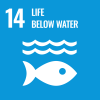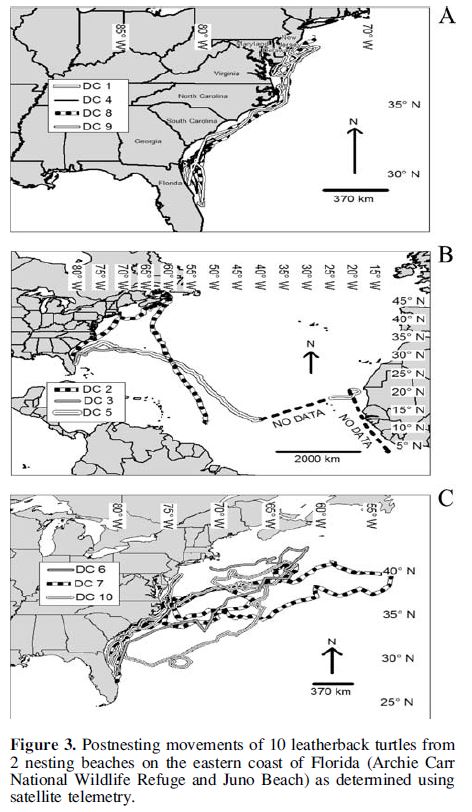
Leatherback turtle tracking

 We tracked 10 leatherback turtles by satellite from 2 Florida Atlantic Coast nesting beaches for a period ranging from 38 days to more than 454 days. Movement and foraging areas were often coastal, which contrasts with other satellite telemetry studies where leatherbacks are more pelagic. Using kernel home-range estimation we identified the primary internesting residence areas as well as Atlantic foraging areas. The primary internesting habitat was centered east–southeast of Cape Canaveral, Florida, from 2 to 60 km offshore and extending 215 km along the coast. Atlantic foraging areas were located primarily on the continental shelf from 30° to 50°N, and in an offshore area centered at 42°N, 65°W, as well as off Africa in the Mauritania upwelling. Seasonally, the location of these foraging areas changed, occurring on the North American continental shelf from March through November and off the shelf from December through February. One of the tracked turtles may have been killed with 17 other leatherbacks by coastal shrimp fishing located near the Georgia–Florida border. We illustrate how using remotely sensed data could be used to prevent such mortalities.
We tracked 10 leatherback turtles by satellite from 2 Florida Atlantic Coast nesting beaches for a period ranging from 38 days to more than 454 days. Movement and foraging areas were often coastal, which contrasts with other satellite telemetry studies where leatherbacks are more pelagic. Using kernel home-range estimation we identified the primary internesting residence areas as well as Atlantic foraging areas. The primary internesting habitat was centered east–southeast of Cape Canaveral, Florida, from 2 to 60 km offshore and extending 215 km along the coast. Atlantic foraging areas were located primarily on the continental shelf from 30° to 50°N, and in an offshore area centered at 42°N, 65°W, as well as off Africa in the Mauritania upwelling. Seasonally, the location of these foraging areas changed, occurring on the North American continental shelf from March through November and off the shelf from December through February. One of the tracked turtles may have been killed with 17 other leatherbacks by coastal shrimp fishing located near the Georgia–Florida border. We illustrate how using remotely sensed data could be used to prevent such mortalities.

